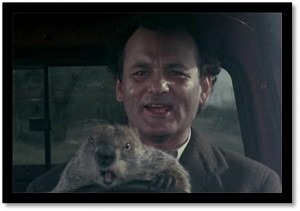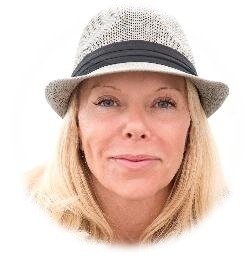 When Chuck Daly coached the Detroit Pistons back in those “Bad Boys” days, he was constantly in search of ways to inspire the 12 millionaires on his bench. After several years of managing the same core group, Daly admittedly starting running out of answers so he started watching TV evangelists for inspiration.
When Chuck Daly coached the Detroit Pistons back in those “Bad Boys” days, he was constantly in search of ways to inspire the 12 millionaires on his bench. After several years of managing the same core group, Daly admittedly starting running out of answers so he started watching TV evangelists for inspiration.
I’m not that patient or desperate, but I have to admit that I scour business journals, magazines, and columns looking for great coaching tips, especially for stations that we’ve consulted for more than a decade.
We all have to bring something new, different, exciting, and innovative to our jobs, whether we’re in sales, programming, management, or ownership.
And that’s why I found myself reading a New York Times profile from their great “Corner Office” feature last Sunday. It featured the CEO of WomanCare Global, Saundra Pelletier, who sounds off about her career aspirations, key hiring questions, and her advice for fledgling college graduates.
 She brings her POV as a start-up to this article, and speaks right to the heart of an important issue for radio execs and managers to be thinking about when hiring talent, salespeople, or anyone with an integral role at the station:
She brings her POV as a start-up to this article, and speaks right to the heart of an important issue for radio execs and managers to be thinking about when hiring talent, salespeople, or anyone with an integral role at the station:
“I love organized chaos. We’re willing to roll and turn and twist, and evolve, but some people don’t like that…Those people are going to be unhappy if they come here and they need ‘Groundhog Days,’ where they come in every day and they do the same thing. I want people who don’t want to get comfortable.”
And doesn’t that pretty much describe a chunk of the mindset that exists at many stations across America? It’s that mentality typified by staunch consistency, conformity, and rigid attention to executing the same way, day in and day out. And yet, consumers tell us about their desire for surprise, serendipity, and smiles.
This has become an ongoing theme in this blog: the need for radio to sound and be different, to move away from the pack, to stand out. It starts with the mindset of the staff.
When Jack Welch was at GE, he advocated an employee grading process that essentially stratified employees into three groups. The upper 20% (who should be praised and rewarded), the middle 70% (who should be motivated and coached), and the bottom 10% (who should simply be fired).
Even if you buy into an evaluation system that groups your company into segments like this, what’s the criteria? And is it fair?
That’s why Pelletier’s comment has a deeper ring of truth for radio, especially as stations are populated today. Employees who approach their jobs in the “every day’s the same day” mentality ultimately detract from the brand, as well as the pursuit of ratings, sales, and profits. “Business as usual,” “stay the course,” “don’t rock the boat,” and “same as it ever was” are the catch phrases that every station should be vigilant about eradicating. And yes, perhaps even replacing the people who are fond of saying them.
Think about your employees and co-workers through the Groundhog Day Radio filter – in all departments. Who are the sales people trying to innovate with new packages and ways to optimize results? Who are the DJs trying new things and looking to make it sound like today is different than yesterday…and tomorrow? Who are the programmers in the building who push their brands to own new territory and expand the station’s footprint? Who in the marketing department is dedicated to ensuring that annual events aren’t carbon copies year after year?
Those are the people who can help you cope with disruption, while they actively contribute to adapting the product, improving the brand, creating a better CX, and hacking their way to new solutions.
Groundhog Day employees, on the other hand, can be erosive and may hold the entire enterprise back. They may have had value in the past when a consistent experience was paramount. But in today’s world where stations have to earn their place on the car’s “center stack,” in the office streaming wars, and in everyday pop culture social media conversations, Pelletier’s criteria should be ours, too. Filling out call sheets, pressing F10 to run the music logs, and celebrating annual events in the same way the station has every year are the activities that ultimately hold the brand back. They lead to bored listeners, and maybe unmotivated employees.
So let’s end the post with this exchange from the Bill Murray movie, Groundhog Day – dialogue that you never want to hear from your staffers:
Rita: What did you do today?
Phil: Oh, same-old, same-old.
- What To Do If Your Radio Station Goes Through A Midlife Crisis - April 25, 2025
- A 2020 Lesson?It Could All Be Gone In A Flash - April 24, 2025
- How AI Can Give Radio Personalities More…PERSONALITY - April 23, 2025




What I liked most about this blog was the quality of your writing. Generally I look for content and since I am a regular reader, just thought I would let you know I think the writing quality was strong.
I love comments like this! Seriously, thanks Dave and we appreciate your readership and support.
I wish I could remember then name of the speaker (at some convention – TEC Orlando maybe???) who said, “…if you want something done well, incentivize it!”
Does radio actually value any of the examples you cite in the “…think about your employees and co-workers…” paragraph enough to provide incentives for doing them? Or will corporate decide what salespeople should make and move the goal posts so that proactive client focused creativity is something that might feel good but isn’t compensated. DJ’s? many stations don’t have any and they tend to be compensated on last month’s PPM, not anything they might do to build their brand in the long run – “…keep it short, keep the music moving…” we all know the drill. Programmers? Pushing brands into new territory is really difficult when you’re programming 4 stations, holding down two airshifts and in charge of imaging for a cluster.
All of those things sound important – even critical to me, but you can tell what an organization/industry values by what they incentivize.
I think there’s a lot of truth in that. And when managers have multiple duties it’s difficult to go above and beyond – hence, Groundhog Days where it’s everything you can do to keep more than one station together. As someone who had to use every ounce of effort just to program ONE radio station, I empathize with those who must multitask and “multi-station.” Thanks, Bob.
You snooze, you lose. Sadly, it’s become a radio world of follow the leader aka how low can you go? One size does not fit all. Local is huge. Content that connects is bigger. Clusters are like a little of puppies…always a couple of sickly ones. Plenty of “new” programs & formats will reach mass appeal and sell … IF we work to present them well. Do we respect that meters, chips, old fashioned radios and smart sponsors will pick up on what’s really good? Go back 90 years….great movies still win…bad movies still close. We have different ways to see & hear broadcasting, with and without transmitters. All you have to do is – ascertain, shuffle, refresh, coordinate, coach the team from worst to first (Red Sox, not AH Rod), understand smart ideas don’t cost but they make money – and cue the organist. Broadcast Boomers will fix it. Wonderful if smart owners / corporations get behind it: Broadcast Renaissance 2014.
Clark, thanks for the perspective. We shouldn’t be shocked when powerful brands meet mass appeal and win – including “The Lego Movie.” Appreciate you chiming in.